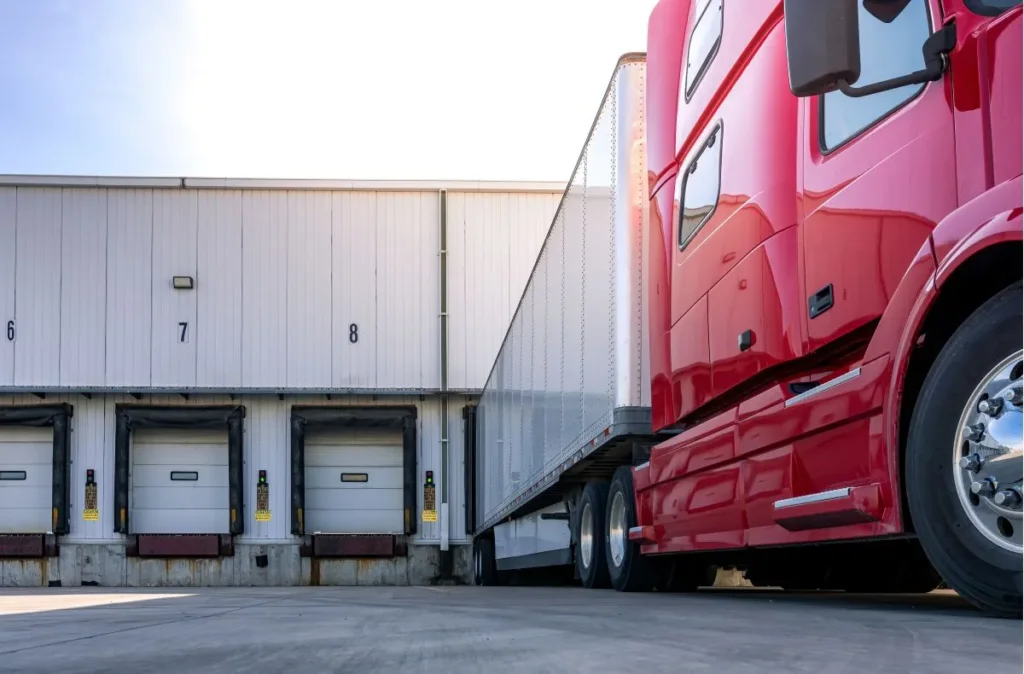The latest European Road Freight Rate Benchmark for Q4 2024, published by Upply, IRU, and Transport Intelligence, presents a detailed snapshot of freight rate fluctuations across Europe. While contract rates showed moderate increases in several key corridors, spot rates remained inconsistent, highlighting the ongoing cost pressures, regulatory adjustments, and fluctuating demand patterns shaping the industry.
Freight rates: a tale of diverging trends
Spain – France: Madrid – Paris corridor
Contract rates on the Madrid–Paris route climbed 3.5% quarter-on-quarter (q-o-q) to €1,458 (€1.15/km), with spot rates up 4.5% q-o-q to €1,484 (€1.17/km). However, compared to last year, contract rates dropped 5.0%, and spot rates dipped 2.1%.
On the Paris–Madrid backhaul, contract rates rose 3.1% q-o-q to €1,803 (€1.42/km), while spot rates fell 5.1%, settling at €1,759 (€1.38/km). The narrowing gap between contract and spot rates suggests stabilization in demand. According to INSEE data, consumer spending in France remained subdued in Q4 2024, which may have limited freight demand on this corridor.
Germany – Poland: Duisburg – Warsaw connection
Germany and Poland saw rising rates amid growing cost pressures. Contract rates on the Warsaw–Duisburg lane edged up 2.3% q-o-q to €1,646 (€1.52/km), while spot rates jumped 3.3%, reaching €1,810 (€1.68/km). Year-on-year (y-o-y), contract rates surged 8.4%, and spot rates 9.4%.
On the backhaul, contract rates surged 7.3% q-o-q to €1,235 (€1.14/km), with spot rates increasing marginally by 1.0% to €1,447 (€1.34/km). Poland remains a critical logistics hub, particularly as nearshoring trends accelerate. According to Eurostat, Poland’s manufacturing output remained steady in late 2024, supporting stable freight demand despite rising labor costs.
France – Germany: Lille – Duisburg route
Rates between Lille and Duisburg reflected broader economic trends. Contract rates for Duisburg–Lille rose 5.3% q-o-q to €680 (€2.25/km), while spot rates inched up 0.8% to €694 (€2.30/km).
On the backhaul, Lille–Duisburg contract rates climbed 5.0% q-o-q to €507 (€1.68/km), and spot rates jumped 6.8% q-o-q to €581 (€1.92/km). The slowdown in German manufacturing continues to limit strong rate increases, with industrial production in Germany contracting 0.3% q-o-q according to Destatis data.
Austria – Germany: Vienna – Duisburg lane
Contract rates on the Duisburg–Vienna route shot up 8.0% q-o-q to €1,386 (€1.45/km), while spot rates dipped 1.7%, settling at €1,557 (€1.63/km). On the Vienna–Duisburg return leg, contract rates inched up 2.8% q-o-q to €1,047 (€1.10/km), while spot rates declined 2.2% to €1,295 (€1.35/km). Austria’s economic outlook remains uncertain, with industrial production declining 3.2% q-o-q in Q3 2024, according to Statistics Austria.
France – UK: rates on a downward trend
Cross-Channel freight saw a notable drop. France–UK contract rates slumped 8.2% q-o-q to €1,671 (€2.81/km), while spot rates slipped 6.3% to €1,776 (€2.99/km).
UK–France contract rates, however, remained steadier, inching up 0.6% q-o-q to €1,091 (€1.69/km), though spot rates declined 0.9% q-o-q to €1,071 (€1.65/km). The UK government’s delayed rollout of new Brexit border controls until January 2025 is expected to create further uncertainty. According to the UK Office for National Statistics (ONS), total goods exports fell 0.4% in October 2024, reflecting weaker trade conditions.
Tachograph deadline extended, but pressure remains
The EU’s push for Smart Tachograph Version 2 (G2V2) installation in all cross-border vehicles has hit a roadblock. The original deadline of January 1, 2025, has been extended to February 28, 2025, following industry concerns over retrofitting delays. Operators now have a short reprieve, but enforcement measures will kick in post-February.
Cost pressures weigh heavily on operators:
- Diesel price: the EU weighted average diesel price hit €1.57/L on December 30, 2024, a 4.6% increase from September but well below 2023 peaks of €1.79/L.
- Tolling costs: Germany’s MAUT toll hike and Denmark’s new CO2-based mileage toll are adding pressure. Similar charges are expected in Poland, Bulgaria, and Romania soon.
- Driver shortages: a staggering 500,000 vacancies, equating to 12% of all driving positions, continues to put upward pressure on wages and rates.
Looking ahead: a balancing act for 2025
Freight operators face a complex road ahead. Rising costs from tolls, fuel, and labor will inevitably push rates higher, but weak demand is expected to keep spot rates under pressure.
New regulatory measures—including CO2 tolling, tachograph mandates, and ETS2 emissions pricing from 2027—are poised to reshape the market further. Meanwhile, nearshoring trends favoring Poland, Romania, and Turkey continue to influence freight flows, according to the European Commission’s Autumn 2024 Economic Forecast.









